|
|
Fear Responsein Peeps |
|
|
|
Fear Responsein Peeps |
|
Introduction: It has long been appreciated that various animals have developed innate responses to stressful situations that may increase their chances of survival. Included in these behaviors is the exaggeration of physical size, a strategy employed by various animals including the common house cat, the pufferfish, and the ever feared Siamese fighting fish.
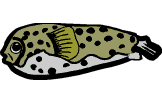
Other behaviors of a similar nature include the ability of skunks to spew foul smelling nastiness at enemies (a response which fortunately has not been observed by peep scientists thus far), and the tendency to exaggerate one's own intelligence (a practice employed multifariously by insecure scientists who through obfuscation and transmogrification render oblique the perspicaciousness of the facts, and attempt to ensure utter confusion through pedantic pontification and verbose oration in order to maintain the illusion of their own preeminence).
In order to assess whether fear adaptations are present in the peep population, it was necessary to find a stimulus that elicits a fear response. After spending hours screaming obscenities at peeps, and subjecting them to a variety of scary stimuli including, but not limited to KFC commercials, Dr. Laura, and a full-length Martha Stewart video, we decided to investigate whether peeps exhibit fear responses when placed in enclosed, brightly lit spaces.
|
Methods: Finding the optimal test environment was difficult. We required a highly controllable, enclosed, artificial micro-environment in which we could precisely manipulate ambient light levels while observing behaviors. We selected the General Electric® 600 Watt enclosure for our studies. |
|
|
Control Procedure: To assess whether enclosed spaces alone produce a fear response, our subject was placed in the enclosure without light. We were unable to detect any increase in size, as shown in the photo on the left. |
| Control Part 2: To rule out bright light alone as a fear-inducing stimulus, our subject was exposed to a light source bright enough to elicit complaints from our neighbors. |
 |
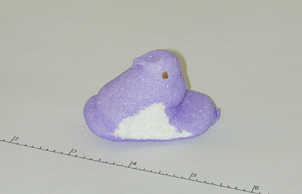 |
Experimental Procedure: While neither enclosures nor bright light were alone sufficient to induce any observable fear response, we hypothesized that the combination of these conditions may push our subjects over the brink of unbridled terror. After obtaining full consent, our brave volunteer peep was placed on calibrated puff-o-meter® paper. |
| Our subject was enclosed in the 600-Watt test chamber, and the light source was activated by setting the chamber for a 30 second run at "maximum power". |  |
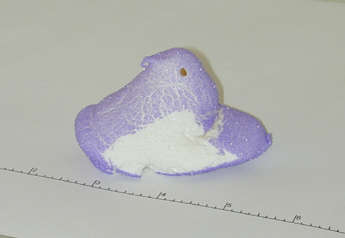 |
After 30 seconds, our subject did indeed demonstrate a marked increase in size consistent with fear responses described in other species. |
|
Our next subject volunteered for a longer exposure. Seen here is the dramatic fear response observed after 75 seconds in our test chamber. Note that in addition to the increase in size projecting great ferocity, the subject's eyes dilated, as is often observed in fight-or-flight responses. |
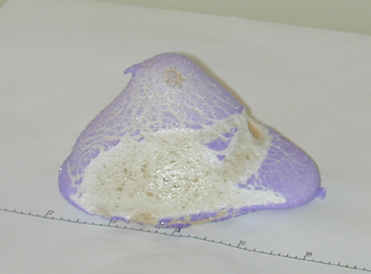 |
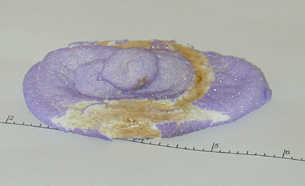 |
After removal from the test chamber, our subject exhibited a compensatory post-stress reaction, possibly due to exhaustion after the intense agonistic display. (Wow, he looks tired!) |
Conclusion: It is the opinion of the authors that these data clearly demonstrate an adaptive fear response to stressful stimuli in the peep species. This response likely evolved in order to intimidate potential predators through the awesome size and prowess achieved in a frightened peep.
Peeps may have evolved this adaptation only to the combination of enclosed spaces and bright light, as adult peeps are often cornered on shelves by flashlight-wielding thieves looking for a sugary treat while ransacking the local drug store. Others have theorized that this is the result of a Jungian cultural consciousness dating back to the horrific electric-glowing ferret invasion of the sub-Saharan Peep den of 1872 -- an event rivaled only by the infamous 200 gigawatt firefly infestation of the Fluffhaven caves in southern Italy.
While we cannot rule out the possibility that Peeps were demonstrating fear in response to the microwave emissions coincident with activation of the test-chamber lighting, this notion seems too outrageous to warrant further consideration by any reasonable scientist.